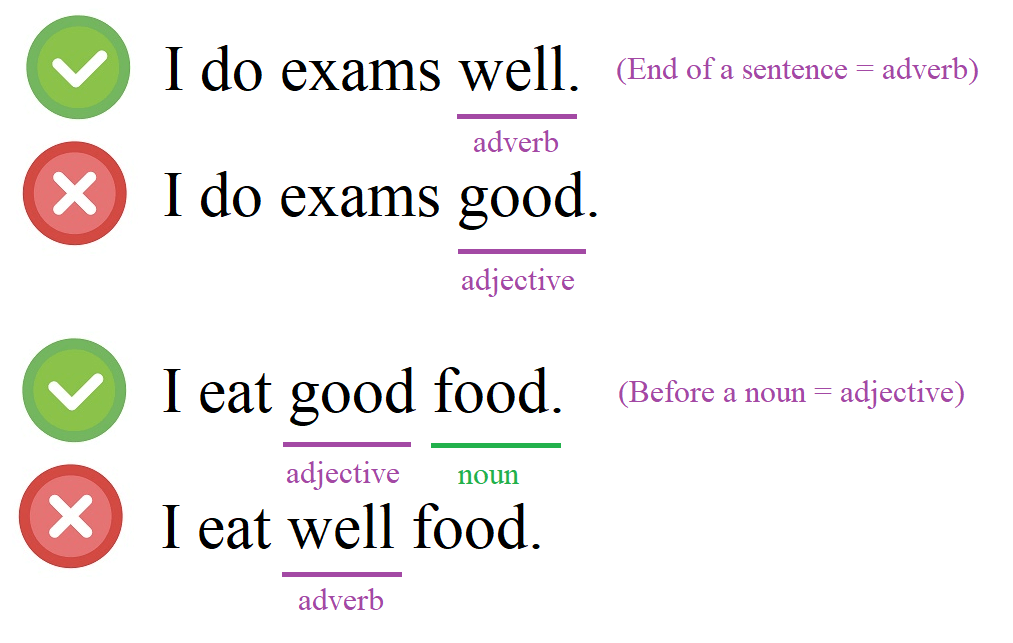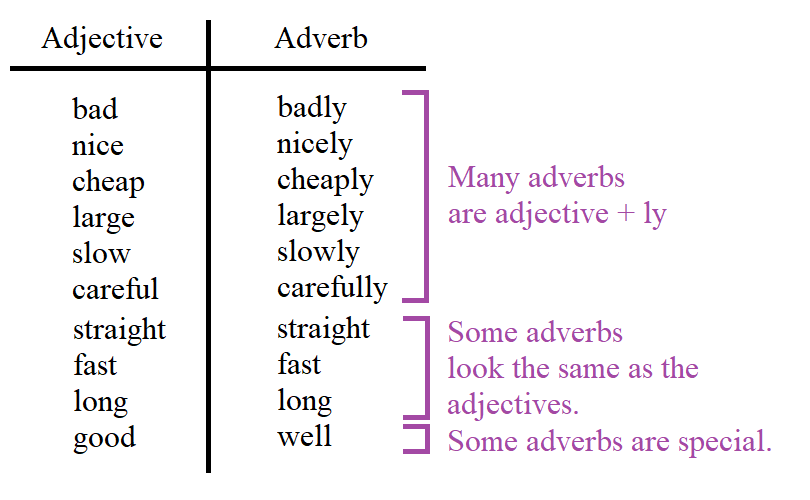Adverb of Manner
- Adverbs of manner describes how something is done.
- They are usually placed either after the main verb or after the object.
- When the emphasis is needed, the adverb can start the sentence.
- An adverb of manner can end with -ly.
An adverb of manner answers the question "How?". These adverbs explain how someone does something or how something happens. They are usually placed either after the main verb or after the object.
Adverb of Manner
An adverb of manner answers the question "How?"
For example, students do exams. You can do it well or badly. "Well" and "Badly" are adverbs of manner.

Examples:
-
I usually sleep well.
"well" is an adjective. An adverb can modify a verb.
-
I usually sleep good.
"good" is an adjective. An adjective cannot modify a verb.
Adverb of Manner in a Sentence
Put an adverb of manner either after the main verb or after the object.
When there is no object, the adverb of manner is placed after the verb.
When the verb has two objects, the adverb is placed after the first object.
Examples:
-
She reads letters carefully.
Subject - verb - object - adverb.
-
He drives slowly.
Subject - verb - adverb.
-
I gave her the cup quickly.
Subject + verb + indirect object + direct object + adverb.
In some cases, the adverb is placed at the beginning of the sentence. You do this to add emphasis.
Examples:
-
Slowly, he turned the key in the lock.
'Slowly' is at the beginning of the sentence to emphasize the manner of his action.
Adverb vs Adjective
Adjectives:
- Before a noun or as a subject complement (E.g. He is nice).
- Modifies a noun.
- Doesn't usually end with -ly.
Adverbs:
- After a noun, before a verb, before an adjective, or before an adverb.
- Modifies a verb, an adjective, or an adverb.
- Can end with -ly.

和AI英語導師一起練習這個主題
AI英語導師會教你文法,並以對話的形式和你一起練習。 另外,還有 100 多個有關該主題的練習題來鞏固您的理解。
在您的手機或平板電腦上免費試用 ALULA








你對這節課有任何問題嗎?請在下面的評論區提問。